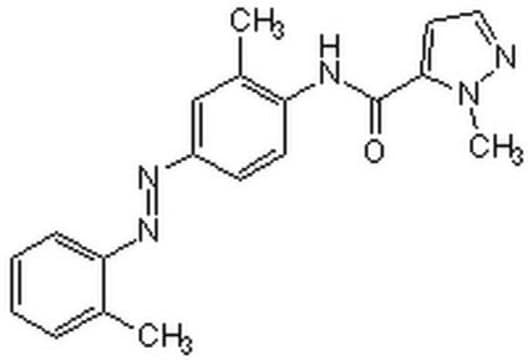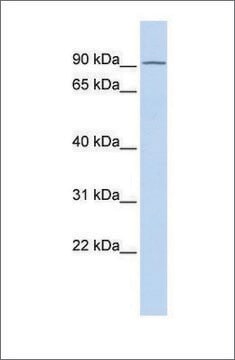No; Sigma-Aldrich has no source for pure 2,3,7,8-Tetrachlorodibenzo-p-dioxin. It is only available as Supelco 48599: 2,3,7,8-TCDD, 10 μg/mL in toluene, ampule of 1mL.
48599
2,3,7,8-Tetrachlordibenzo-p-dioxin -Lösung
analytical standard
Synonym(e):
2,3,7,8-TCDD
About This Item
Empfohlene Produkte
Qualität
analytical standard
Analysenzertifikat (CofA)
current certificate can be downloaded
Verpackung
ampule of 1 mL
Lagertemp.
2-8°C
InChI
1S/C12H4Cl4O2/c13-5-1-9-10(2-6(5)14)18-12-4-8(16)7(15)3-11(12)17-9/h1-4H
InChIKey
HGUFODBRKLSHSI-UHFFFAOYSA-N
Allgemeine Beschreibung
Anwendung
Signalwort
Danger
Gefahreneinstufungen
Aquatic Chronic 1 - Asp. Tox. 1 - Flam. Liq. 2 - Repr. 2 - Skin Irrit. 2 - STOT RE 2 - STOT SE 3
Zielorgane
Central nervous system
Lagerklassenschlüssel
3 - Flammable liquids
WGK
WGK 3
Flammpunkt (°F)
39.2 °F - closed cup
Flammpunkt (°C)
4 °C - closed cup
Zulassungslistungen
Zulassungslistungen werden hauptsächlich für chemische Produkte erstellt. Für nicht-chemische Produkte können hier nur begrenzte Angaben gemacht werden. Kein Eintrag bedeutet, dass keine der Komponenten gelistet ist. Es liegt in der Verantwortung des Benutzers, die sichere und legale Verwendung des Produkts zu gewährleisten.
EU REACH Annex XVII (Restriction List)
Hier finden Sie alle aktuellen Versionen:
Besitzen Sie dieses Produkt bereits?
In der Dokumentenbibliothek finden Sie die Dokumentation zu den Produkten, die Sie kürzlich erworben haben.
Kunden haben sich ebenfalls angesehen
-
Can I get pure 2,3,7,8-Tetrachlorodibenzo-p-dioxin from Sigma-Aldrich?
1 answer-
Helpful?
-
-
What is the molecular weight of 2,3,7,8-Tetrachlorodibenzo-p-dioxin, Product 48599?
1 answer-
The molecular weight of 2,3,7,8-TCDD is 321.97 Da.
Helpful?
-
-
What is the Department of Transportation shipping information for this product?
1 answer-
Transportation information can be found in Section 14 of the product's (M)SDS.To access the shipping information for this material, use the link on the product detail page for the product.
Helpful?
-
-
Is Product No. 48599, 2,3,7,8-Tetrachlorodibenzo-p-dioxin solution, appropriate for use in tissue culture studies?
1 answer-
The 2,3,7,8-Tetrachlorodibenzo-p-dioxin solution (10 μg/mL in toluene), is sold as 1mL in a flame sealed ampule. It is made to be used as a chemical standard with US EPA drinking and wastewater analytical methods. We have no knowledge of its use in tissue culture.
Helpful?
-
Active Filters
Unser Team von Wissenschaftlern verfügt über Erfahrung in allen Forschungsbereichen einschließlich Life Science, Materialwissenschaften, chemischer Synthese, Chromatographie, Analytik und vielen mehr..
Setzen Sie sich mit dem technischen Dienst in Verbindung.


![Benzo[a]pyren ≥96% (HPLC)](/deepweb/assets/sigmaaldrich/product/structures/253/820/be96d879-1811-46c0-8f11-612019691c2d/640/be96d879-1811-46c0-8f11-612019691c2d.png)









